Top Story: Transportation
It’s a lock: subway tests underway
February 27, 2013
As Metro officials prepare to latch the gates on L.A.’s subway system this June, they’ve had obstacles to overcome in familiarizing passengers with the TAP cards that are now mandatory for most travelers.
The final frontier, though, has been figuring out a way to allow Metrolink riders, who use paper tickets, to connect seamlessly with Metro trains once the gates are locked.
The solution: microchip-embedded paper tickets that will unlock gates for Metrolink commuters passing through.
Starting in March, that workaround will be getting a major tryout in the real world, with gates temporarily locking at Union Station’s West Portal during certain planned intervals as part of a joint project by Metro and Metrolink.
The object is to see if Metrolink riders and an in-house test group of passengers can navigate the gates smoothly.
Meanwhile, an intermittent series of locking tests has been rolling out elsewhere in the system to see how the TAP card-carrying public is faring—and how Metro employees are responding.
Recent tests at the Wilshire/Normandie, Wilshire/Western and North Hollywood stations have put staffers through their paces responding to patrons’ calls for assistance through the “Gate Help Phone System,” or GTEL, which is being installed at all stations with gates.
“This whole effort right now is to get our folks who man the GTELs some practice,” said David Sutton, Metro’s Deputy Executive Officer of TAP . “I don’t think they’ve had any questions they can’t answer.”
Sutton’s team also is grappling with occasional glitches like the bottlenecks that can crop up when a passenger’s TAP card doesn’t work, or a customer attempts to maneuver a bicycle through an emergency door.
“Customers are on a learning curve, that’s true, but they seem to be getting it,” Sutton said. “Even at North Hollywood, which is a very, very busy station, they’re getting it.”
Posted 2/27/13
Look who’s in the fast lane
February 7, 2013
As Los Angeles learns the ins and outs of its first toll roads, the agency behind the pilot project is taking a look at who the early adopters are.
And wondering why folks in Tenafly, New Jersey, Peoria, Illinois and Peterborough, New Hampshire saw fit to purchase one of the new transponders to drive on the 11-mile stretch of ExpressLanes on the 110 Freeway south of downtown L.A.
“Maybe they’re business travelers. Maybe they’re the parents of students going to school out here,” said Stephanie Wiggins, who manages the ExpressLanes project for Metro and says she expects to learn more about the out-of-town phenomenon as research continues.
As it stands now, people from more than 400 cities and towns in California and across the country as far away as Honolulu have purchased FasTrak transponders since the program started in November.
Most, however, are from Los Angeles County—where Metro’s ZIP code analysis shows that Los Angeles residents are the top transponder buyers, followed by people in Torrance, Redondo Beach and Long Beach. The Top 10 also includes residents of more northerly communities like Pasadena and Glendale.
Some 88,000 transponders were in circulation as of Tuesday, putting the project on a fast track toward reaching its goal of 100,000 in its first year of operation.
A second set of toll lanes, running for 14 miles on the 10 Freeway between Alameda Street in downtown Los Angeles and the 605 Freeway, is set to open on Feb. 23.
As Metro and Caltrans prepare to roll out the lanes on the 10, they’re analyzing what they’ve learned so far and how to apply it.
For example, outreach is being stepped up to include 230 religious institutions along the 110 corridor, where brochures will be distributed and “pulpit presentations” are planned, either by clergy or ExpressLanes representatives.
“Faith-based organizations are a powerful forum for getting information out to community members,” Wiggins said.
They’re also a good place to get out the word about the program’s “equity plan,” in which low-income households can get a transponder for $15—instead of the $40 usually required. Smaller discounts for transponders, which work on toll lanes throughout California, not just in L.A. County, are available when purchased through the Automobile Club of Southern California, Costco and Albertsons.
There have been no accidents attributed to the ExpressLanes, but officials are increasing signage to make sure motorists know the rules of the road. Wiggins said there have been reports of “near-misses” on the 110 involving drivers who have dangerously crossed the double white lines between the toll lanes and regular lanes, perhaps trying to avoid a fine for getting caught on camera without a transponder.
Another side effect of the toll lanes: traffic has gotten more congested in the freeway lanes next to them. Wiggins said that traffic should eventually revert to normal as motorists become familiar with the stretch and the influx of CHP officers now patrolling it.
On another front, Metro’s Board of Directors is considering whether to scrap the program’s $3 monthly maintenance fee, which is charged to occasional users who drive in the lanes fewer than four times a month. Supervisor and Metro Director Zev Yaroslavsky contends in a motion that the fee should be dropped as a matter of fairness.
The ExpressLanes replaced what was formerly a high-occupancy vehicle lane on the 110. But Metro’s analysis shows that carpoolers—who ride for free in the new lanes as long as they purchase a transponder—still represent 62% of the customers so far and have been using the lanes most heavily between 7 a.m. and 8 a.m.
Solo drivers, who pay tolls when they use the lanes, make up 38% of ExpressLanes users and are out in greatest force between 8 a.m. and 9 a.m.
Overall, the number of daily trips is increasing, from 39,820 in mid-November to 43,900 by mid-January.
For those overseeing the pilot project, though, the most important number is 45—as in miles per hour. That’s the minimum average speed the lanes must achieve to be considered a success, under the terms of the $210 million federal grant that’s paying for them.
So far, they’ve been up to speed 100% of the time.
Posted 2/7/13
Motion seeks to change toll lanes fee
December 13, 2012
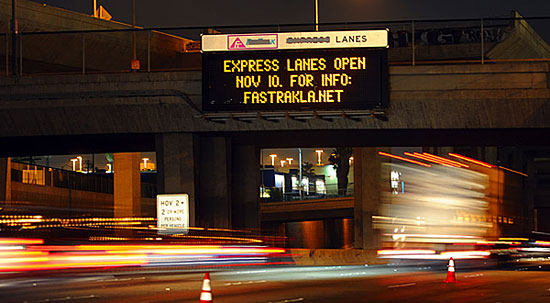
L.A. motorists have been learning the rules of the road for new ExpressLanes. Photo/San Gabriel Valley Tribune
As L.A. motorists adjust to the county’s first ExpressLanes, they’ve had to get up to speed on a new world of transponders, infrared enforcement cameras and pay-as-you-drive pricing.
Thousands of fare evasion citations already have gone out to drivers caught in the new lanes on the 110 Freeway—inadvertently or on purpose—without the required transponders. And although fines were waived during an introductory trial period, motorists face hefty penalties of $154 or more for driving without a transponder—and $401-plus for solo drivers who fudge the setting on their device to indicate they’re carpooling and thus entitled to a free ride.
But it turns out that even motorists attempting to play by the rules by obtaining a transponder and paying required tolls have an additional price to pay—a $3 monthly maintenance fee levied on occasional users who drive in the lanes fewer than four times a month.
That seems unfair to Supervisor and Metro Director Zev Yaroslavsky, who has introduced a motion, to be considered at the Metro board’s January meeting, that would eliminate the monthly fee.
Penalizing the occasional user by levying a fee discourages participation in the pilot program and sends the wrong message, Yaroslavsky said in the motion.
“This fee is unfair and discourages new users,” the motion said. “We should treat all subscribers equally.”
Posted 12/13/12
Thousands hit with toll lane citations
November 27, 2012
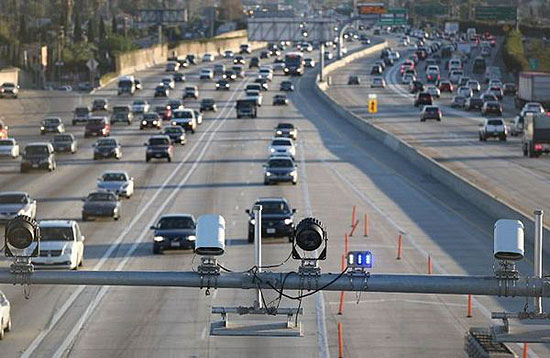
L.A.'s first toll roads are up and running, but don't venture in without a transponder. Photo/Los Angeles Times
The free ride is over for thousands of motorists who’ve been driving in Los Angeles’ first toll lanes without paying their way.
The new ExpressLanes on the 110 Freeway opened November 10, and as of Monday, Metro had mailed 12,297 citations to motorists caught on camera without the required FasTrak transponders. Collectively, the first batch of toll lane scofflaws owes $18,358 in outstanding fees—a total that’s expected to rise as more citations go out in the weeks ahead.
That’s the bad news. The good news is that, for now, offenders are only being asked to fork over enough to cover their tolls. They aren’t yet being hit with any fines for rolling into the new pay-as-you-go fast lanes that used to be reserved solely for carpoolers and motorcyclists. (They continue to ride for free but, like everybody else who uses the new lanes, still need to have a transponder. Here’s how to get one. Read more about the rules of the road here or consult the project’s Frequently Asked Questions page.)
The Metro fines for those driving in the lanes without a transponder—$25 plus a $30 penalty if you pay late—kick in beginning December 10, when the pilot program hits the one-month mark. In addition, the California Highway Patrol has the authority to issue tickets of $401-plus for solo drivers who evade fares by placing their transponders on a carpool setting, and penalties of at least $154 for those driving in the lanes without the device. (To help CHP officers know who to pull over, there are sensors along the 11-mile route, along with beacons to signal to officers whether cars have transponders and whether they’re set to correctly reflect how many people are in the vehicle.)
As motorists adjust to a huge change in L.A.’s freeway culture, there’s a certain amount of confusion out there, said CHP Sergeant Terry Liu, ExpressLanes supervisor for the agency.
“A lot of [drivers] don’t understand that every vehicle has to have a transponder regardless of whether or not you satisfy the car pool requirement,” Liu said. “We are seeing people crossing over the double white lines, and then, when we pull them over, we notice they have no transponder.”
At this stage, Metro’s primary goal is not to punish violators but to get more people on board with the program, said Stephanie Wiggins, the project manager for Metro.
“When we send out the [toll citation] notices, we also send out an application” to get a transponder and set up an account, Wiggins said. “If they apply, they can get a waiver of the penalty. We want good customers, good transactions. It’s partly a marketing tool.”
Wiggins says the fine-free grace period also is an attempt to acknowledge that, despite outreach efforts, there was no way for Metro to engage the attention of every potential driver on the busy freeway. She also said that some confusion was to be expected initially. Once drivers start receiving citations and word spreads, she expects more people to fall in line. An electric sign with travel times and toll amounts, due to be unveiled this week, should also help ease some of the confusion.
There’s no way to immediately determine how many violators are gaming the system or are merely confused. Wiggins noted, however, that some of the citations are going to repeat toll lane offenders. But not for long, she predicted.
“Once they get tickets and understand that we do have a way to monitor them, we expect more compliance,” she said.
Overall, Wiggins said, traffic speeds in the ExpressLanes have exceeded the agency’s goal of 45 miles per hour. In fact, average speeds during peak traffic have been 63 miles per hour in the northbound lanes and 58 miles per hour in the southbound lanes, she said.
However, traffic in the free lanes has gotten more congested, she added, attributing the problem in part to motorists slowing down to try figure out the new program.
The toll lanes on the 110 run from the 91 Freeway to Adams Boulevard in downtown L.A. In January, 14 additional miles of ExpressLanes are set to open on the 10 Freeway between the 605 Freeway and Alameda Street downtown.
Posted 11/27/12
Life in the ExpressLanes
November 1, 2012
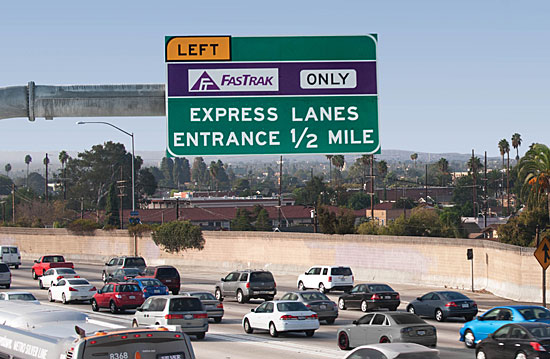
The ExpressLanes project promises, at least temporarily, to change commuting as we know it on the 110.
In the city known for its freeways, things are about to get a little less free. Toll lanes are coming to the 110 Freeway starting November 10, when Metro’s new ExpressLanes pilot program shifts into gear, dramatically changing the way motorists operate on a major roadway south of downtown Los Angeles.
The program is aimed at reducing congestion on the 110, a major route for commuters who work, live or pass through downtown. For the first time, solo drivers will—for a price—be able to travel in what were once lanes dedicated solely to carpoolers.
“Status quo isn’t working, and that’s the reality,” said Stephanie Wiggins, the project manager. “Traffic is at such crisis proportions that we need to make a change.”
But Wiggins acknowledges that the logistics may be confusing, at least initially, in an L.A. motoring culture that for generations has cherished the “free” in its freeway system.
So buckle up your seatbelts and pay attention. Here’s what you need to know.
Everybody who wants to use the express lanes needs to get a transponder for their vehicle and establish an account, with an initial deposit of $40. Everyone also will pay a $3 monthly maintenance fee, in addition to fares charged for driving in the lanes, which will vary depending on how heavy the traffic is. The more congested, the higher the price per mile. Fees range from 25-cents to $1.40 per mile.
Real-time pricing will be displayed on electronic signs along the freeway, and sensors will communicate with on-board transponders to deduct fares automatically from the pre-paid account.
Now—stay with us—here’s some of the fine print.
Carpoolers and motorcyclists will still be able to use the lanes without paying fares. But to do so, they’ll need to open an account and get a transponder, which costs money. (Applicants can, however, apply for an income-based “equity plan,” which reduces the initial deposit to $15 and waives the monthly fee for those who qualify.)
The system is based on the transponders’ ability to read how many people are traveling in a vehicle. So drivers will have to set the switch on their transponders to 1, 2 or 3—indicating how many people are onboard. If it’s set to “1,” the fares for solo drivers will be triggered; otherwise, it’s a free ride for carpoolers.
Drivers can sign up on the program’s website, at Metro customer service walk-in centers or by calling 511. It can also be done at local Automobile Club branches, where full accounts will be offered at a 20% discount.
The transponder will work on FasTrak toll roads across California, including those already operating in Orange, Riverside and San Diego counties. In Los Angeles County, the lanes will start on the 110 between downtown and the Harbor Gateway Transit Center, near the 91 Freeway in the Carson area. Come January or February of next year, they’ll also open on the 10 east of downtown. See this map for more detail on the L.A. County lanes.)
Law enforcement and cameras will make sure everyone is paying the proper fares. California Highway Patrol will issue $341 citations to FasTrak users who have set their transponders to indicate the wrong number of riders. Camera enforcement will be used for those without transponders, with violators receiving fines equal to the toll they would have paid plus a $25 penalty.
The pilot program is being funded by a $210 million grant from the United States Department of Transportation. The grant underwrites the program, road improvements and increased bus service in the corridor, using 59 new clean fuel buses. To encourage more people to try the bus instead of driving, Metro is waiving monthly account fees for registered TAP card users who make four one-way trips along the corridor.
As is probably evident by now, there are a lot of moving parts to the express lanes project. Yet Wiggins remains optimistic, citing the success of similar programs in other parts of California and nationwide.
“All the other cities have experienced a ramp-up,” said Wiggins. “There is a period where the customer takes time to adopt it.”
Metro is partnering on the project with Caltrans, and has contracted with FasTrak, a private company, to produce the transponders. After the one-year pilot period has ended, collected data will be analyzed and presented to the state legislature. Then, Metro’s Board of Directors will decide whether to continue the program or scrap it.
Posted 11/1/12
Fed OK gets subway moving
August 16, 2012
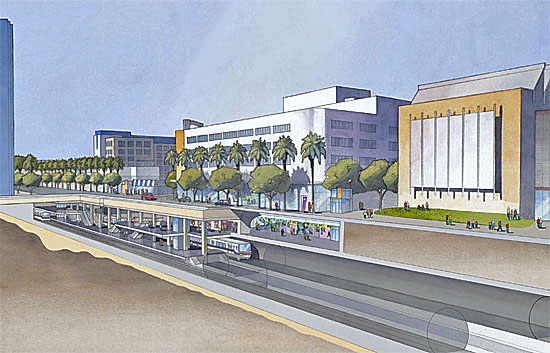
This rendering gives a cutaway view of how the Wilshire/Fairfax subway station by LACMA could look. Illustration/Metro
The Federal Transit Administration has granted a crucial approval to the Westside Subway, ushering in a new era for the project as Metro prepares to seek federal funding and begins advance work on construction.
The FTA’s “record of decision” means that environmental studies for the subway project have met all federal requirements. While most of the money to build the subway will come from Measure R, the voter-approved ½-cent sales tax, constructing the project also will require federal matching funds. The FTA’s environmental approval clears the way for the Metropolitan Transportation Authority to pursue funding under the federal New Starts program.
It also sets the stage for work to begin on a number of other fronts.
In addition to relocating utilities and acquiring property needed to build the project, contractors for Metro soon will begin building an “exploratory shaft” near the La Brea Tar Pits to help the agency evaluate the area’s “unique ground conditions.”
The shaft, to be built on a Los Angeles County Museum of Art parking lot at the southwest corner of Wilshire Boulevard and Ogden Drive, will allow engineers to expand on the data gathered in the environmental review process as they investigate earth pressure and gassy ground conditions in the area. The 40x20x75 foot shaft also is expected to be used to demonstrate safe construction procedures and to help refine construction cost estimates for the project.
The shaft will be built over the course of 13 months, starting this fall, and will remain in place for monitoring through the fall of 2014.
Because the area is rich in fossils, a full-time paleontologist will be on-site to make sure discoveries are properly handled and turned over to the county’s George C. Page Museum.
The Westside Subway Extension will include seven new stations along its 9-mile route, running from the current end point of the Purple Line at Wilshire and Western to the VA Hospital in Westwood.
Construction on the first part of the the line, to Wilshire and La Cienega, is expected to begin in 2014 and conclude by 2020, with the entire project finishing up by 2036 under the current timetable. However, Metro is hoping to accelerate construction of the $5.6 billion project under the America Fast Forward initiative and a proposed extension of Measure R, and to finish the entire route by 2022.
When complete, the subway will make it possible to travel from downtown Los Angeles to the Westwood/UCLA station in 25 minutes.

A paleontologist will be on duty at Metro's "exploratory shaft" near the La Brea Tar Pits in case of fossil finds.
Posted 8/14/12
Effort to extend Measure R advances
July 2, 2012
Metro’s Board of Directors on Thursday approved a plan to let voters decide on a 30-year extension of Measure R, the ½-cent sales tax measure passed in 2008 to fund transportation improvements in the county.
The board voted 10-3 in favor of placing the extension measure on the November ballot. The original Measure R keeps the sales tax in place through 2039. The extension, if approved, would continue it for 30 years beyond that, or until voters decide to end it.
Los Angeles Mayor Antonio Villaraigosa, the extension measure’s most vocal proponent, said it would create more jobs faster and would allow Metro to accelerate the pace on important transportation projects while saving money on lower construction costs in a slumping economy. Extending Measure R would also create a larger pot of future revenues that Metro could borrow against to receive low-interest federal funding, he said.
“It’s a game-changer and a big win for L.A. County,” Villaraigosa said.
According to a Metro report, the extension would accelerate creation of 260,000 of the 410,000 jobs projected under the original Measure R, and would send $43 billion of the originally projected $67 billion into the local economy sooner. It would allow a speeded-up timetable on projects ranging from the Westside Subway to the Eastside Gold Line Extension, the agency said.
Voting against placing the measure on the ballot were Supervisors Michael D. Antonovich, Don Knabe and Mark Ridley-Thomas.
Knabe said the extension would give Metro “a blank check” and would erode the fiscal discipline of the original measure’s 30-year duration.
“The sales tax currently does not expire until 2039, so there is no reason to extend it unless we want to spend the next generation’s money today,” Knabe said in a statement after the vote.
The Metro board’s action is one in a series of steps needed to place the Measure R extension before voters. A bill sponsored by Assemblyman Mike Feuer that would allow the measure to go forward is working its way through the Legislature and requires the governor’s approval to become law.
Then the county Board of Supervisors must formally approve placing it on the ballot. Even though three of the five supervisors voted against it on Thursday, Villaraigosa said he expects the board to approve the ballot placement when it comes before them as a routine, “ministerial” matter.
Metro’s staff had recommended an indefinite extension of Measure R, but the board opted instead to ask voters to approve a 30-year increase. The extension requires two-thirds voter approval to take effect.
The last time out, county voters handily approved the measure, with nearly 68% voting in favor of the ½-cent tax. And they did so even though the economy had just begun its great economic collapse, Supervisor Zev Yaroslavsky reminded his colleagues on the Metro board.
“The public is way ahead of us on this issue,” Yaroslavsky said, “and are willing to spend their resources—for traffic improvements, for public transportation alternatives, for the creation of jobs and the improvement of the economy.”
Posted 6/28/12
Riding high as Expo hits Culver City
June 27, 2012
As the Expo Line started service to Culver City this week, Metro officials announced that overall rail ridership is on a roll in the county, with more than 100 million boardings projected this fiscal year.
Metro CEO Art Leahy said those levels haven’t been seen since World War II, and he credited the system’s expansion—along with more frequent trains, increased night hours and better maintenance—with drawing more riders to local light rail and subway lines.
The region’s rail expansion includes the Expo Line, which opened in April and averaged 11,347 daily boardings in May, its first full month of operation.
That’s low compared to opening month figures for other Metro light rail lines, including the Blue Line (19,600 in August, 1990) or the Gold Line (18,364 in August, 2003.) But Expo opened without two of its stations—Culver City and Farmdale, both of which rolled out the welcome mat Wednesday, completing the initial 8.6-mile stretch of the light rail line.
“With the opening of these two stations, we anticipate a substantial increase in ridership,” Metro spokesman Rick Jager said.
In Culver City, local bus lines have been reconfigured to make it easier for passengers to switch to the train at the station, which is expected to generate about 3,000 additional boardings a day.
Leahy said it takes time to build ridership on any new line. But he added that the growing reach of the rail system is making the train an increasingly desirable travel option in a car-clogged metropolis.
“You can go to Hollywood, the Valley, East L.A., Long Beach and now Culver City,” he said.
The record ridership numbers predicted for the fiscal year ending June 30 show the power of investing in the system, Leahy said, although he acknowledged that high gas prices are a factor, too.
And the system is still growing. Work on Expo’s second phase, to extend the light rail to Santa Monica by 2015, is now underway.
“We’re seeing the cumulative effect of what’s going on,” Leahy said. “We’re really achieving a critical mass.”
Watch dignitaries including Supervisor Zev Yaroslavsky inaugurate the new Culver City station in this video.
Posted 6/20/12
Expo opens to Culver City on June 20
June 5, 2012
The Expo Line hits full strength on June 20, when the light rail’s Farmdale and Culver City stations open to the public.
The opening completes the 8.6-mile first phase of the line, which debuted with stations originally extending as far west as La Cienega on April 28. A second phase to extend the line all the way to Santa Monica is now being built.
The elevated Culver City station opens up a gateway to the city’s popular eateries and other attractions, including the quirky Museum of Jurassic Technology.
The Farmdale station, near Dorsey High School, was not originally part of the line, but was added later, after the Public Utilities Commission approved a station at the site. The Culver City station, original conceived as an interim station for phase one, changed course and became an elevated, permanent station after state funding became available.
Expo CEO Rick Thorpe said a 600-space park-and-ride lot will open along with the Culver City station, and bus lines in the area will be realigned to feed into it.
“It should be a very, very heavily used station,” he predicted.
The stations will open at noon on Wednesday, June 20. That means that participants can ride Expo to Culver City’s Third Wednesday “Summer Solstice” Happy Hour, with attractions including music from a six-string electric cello, an open house at the Kirk Douglas Theatre, dancing and all kinds of liquid refreshment at local watering holes.
Posted 6/5/12




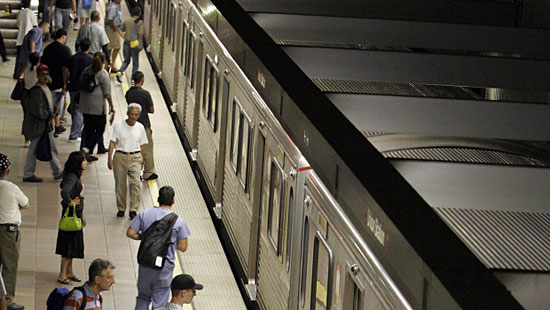
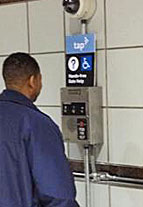
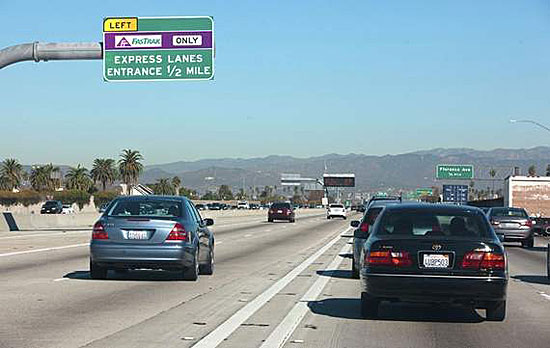
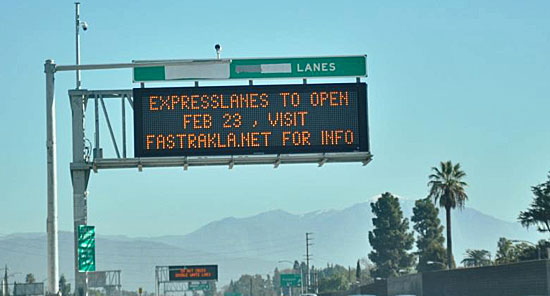
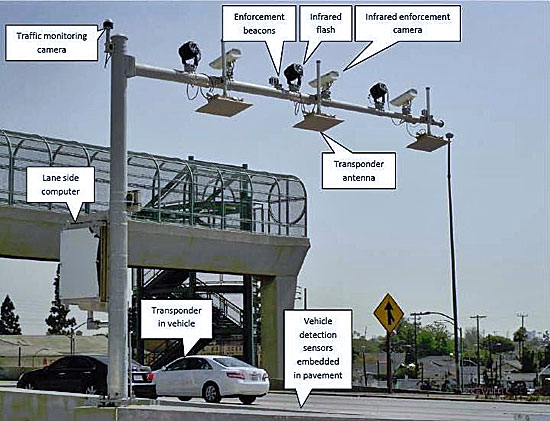
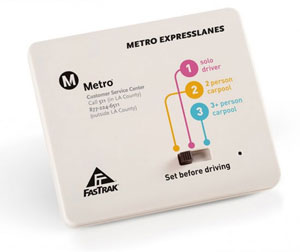
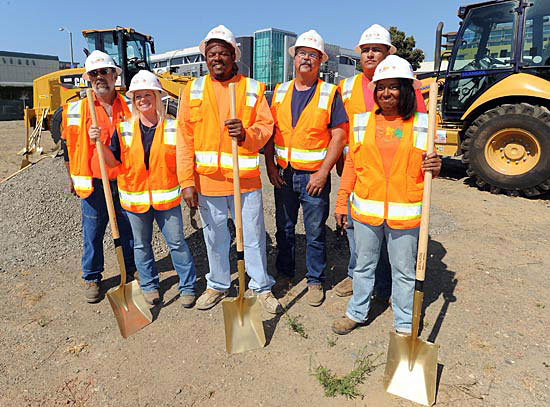
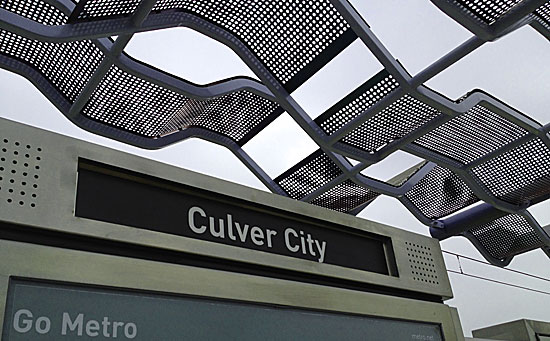








 405 bridge work causes a stink
405 bridge work causes a stink

